click here for video
Envisioning Energy // Clay
self sufficient buildings
iaac 2019-20
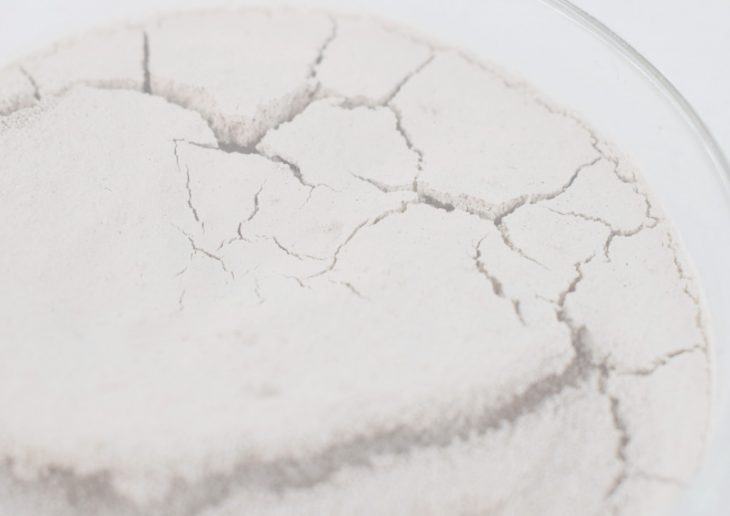
Our project investigates the properties that are found in the natural material that can be found in our environment. We are exploring the possibilities of the material to absorb, retain and release energy to its surroundings with time. Following our exploration we aim to understand the relationship this material has to its surroundings.
(1) Clay is very absorbing to humidity
(2) It deforms via cracking, and peeling after it undergoes a drying cycle
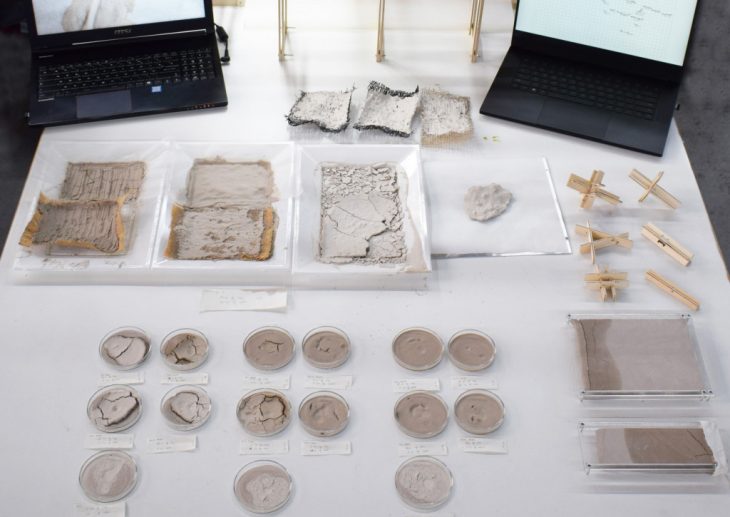
In combination with materials that can hold onto the clay, containing it, a machine can emerge. The development of geometry and materials is focused on amplifying the visual and physical changes in the material, and integrating energy sources.
Through our research, we can start to relate how clay is affected by nature.
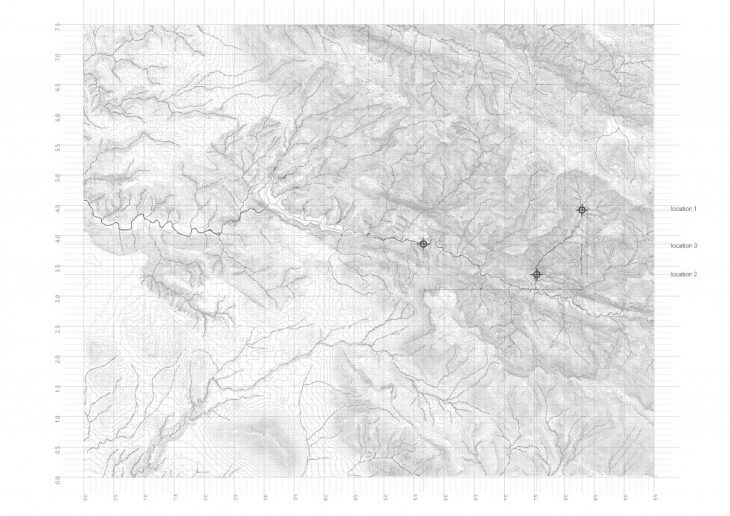
This landscape consists of a mountainous range that feeds many smaller sources into a larger river. We are fascinated by how a single water system can contain multiple locations with such different environmental conditions.
- So we focus on 3 locations along the river:
- Location 1
- 2000m altitude
- very windy, very dry and exposed site.
- several streams feed into a sort of bassin
- medium flow
- Location 2
- 1070m altitude
- it has lost 900m of altitude in a few kilometers
- flow here is very strong as it cuts it cuts through cliffs
- and the water crashes down into the valley
- creating an extremely humid atmosphere
- Location 3
- 980m – not a major loss of altitude
- At this point the river has accumulated a lot of streams
- But it has also widened a lot, meaning the flow is much less strong
- It also is shaded from the sun and wind because, at the bottom of a deep valley.
- Location 1
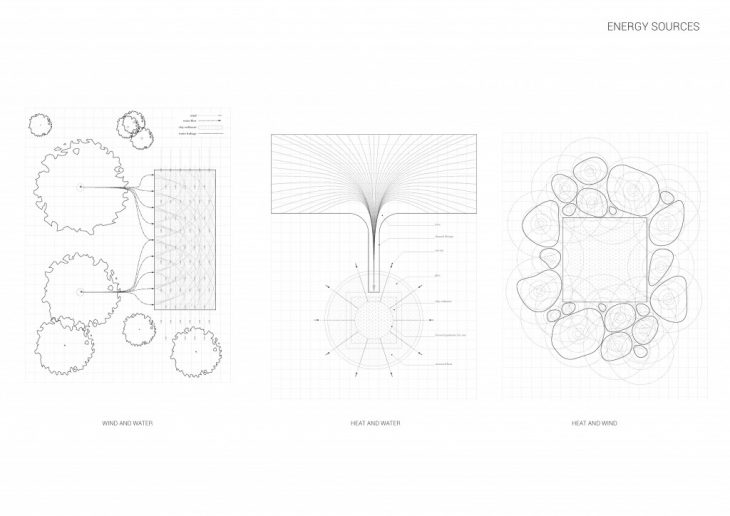
Different energy sources affect the state of the material. The sources are found in nature and have a direct relationship with the physical properties of the material. Processes of wind energy allows the clay to dry naturally through a duration of time. Processes of heat energy accelerate the drying of the sediment much more rapidly. Together with wind and heat, the state of the clay is altered at a much faster and stronger rate. These invisible forces start to change how we visualize the energy of our material.
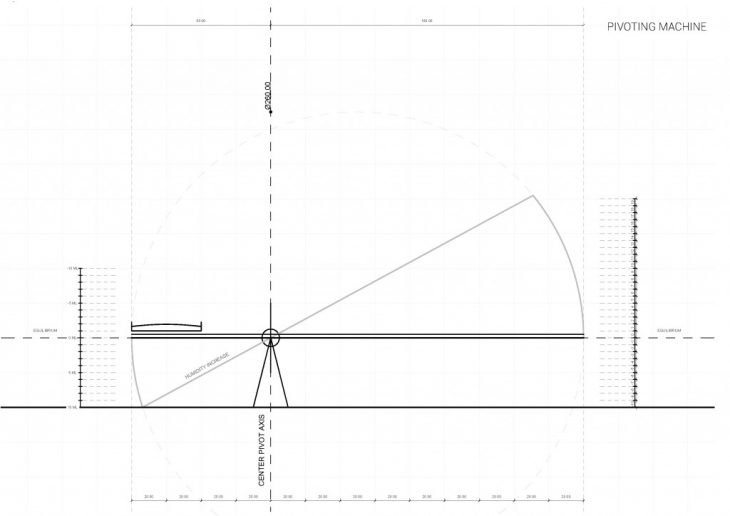
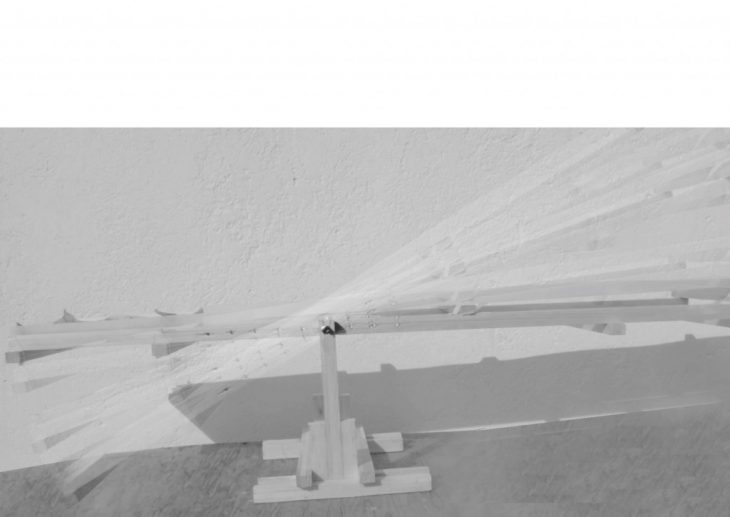
The design focuses on the cyclical process of humidifying and drying the material through this pivoting machine. The pivot works with the clay on the shorter end as a counterbalance for the weight of the longer end of the machine. The offset pivot maximizes the rotation distance, so the visible movement. Requiring no active energy input apart from the environmental forces which dry the clay, it purely reflects the energies of its location.
Pivot acts as an amplifier to measure the deformation in the clay
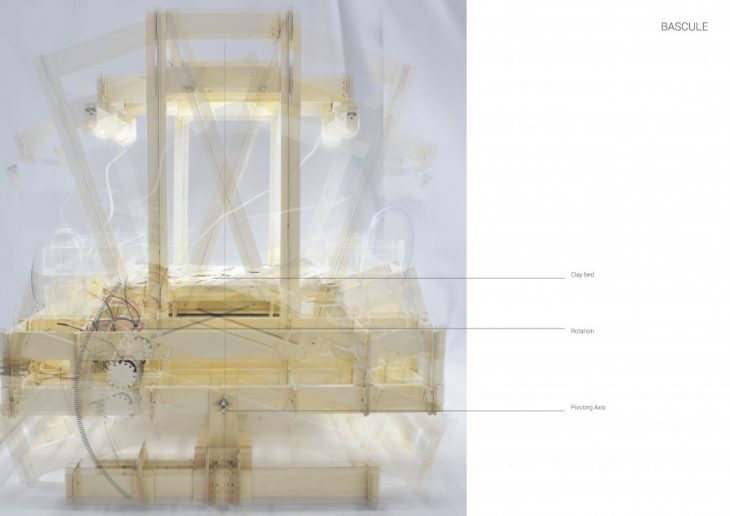
This iteration of the machine focuses on recreating all the energies that can be found in nature within one device. It incorporates electrically-powered energy sources: a heat bed, water pumps, a light, and a motor. Furthermore, the geometry helps us to film the cracking of the clay and gather data on the behavior of the clay.
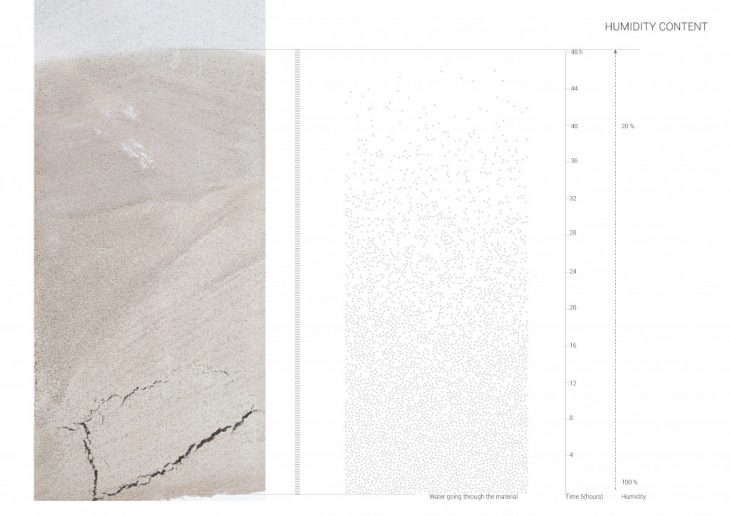
To understand how the material works over time with water content we let the material sit in a pool of water and over time the water would get absorbed by the material and hold its humidity.
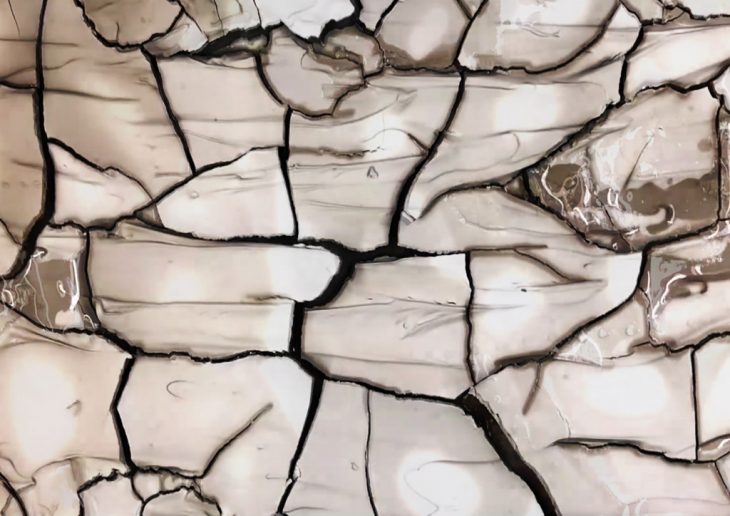
Using our device that encapsulates all the energy sources and its behaviors interacts with the material we can understand the material deformation that occurs.
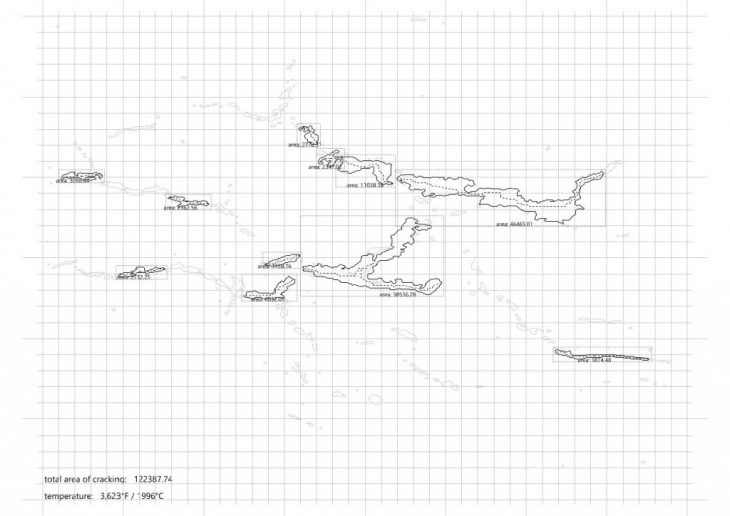
Analyzing the cracking area through the image reveals how the humidity escapes the clay. Mapping the cracking spread (its area) to a timeline allows us to understand the rate of cracking. Heat accelerates the drying process. The visual change is much more enhanced with the energy source that the clay is in contact with. It is important to take into consideration the possibilities of how the clay dries and how that visual change is documented.
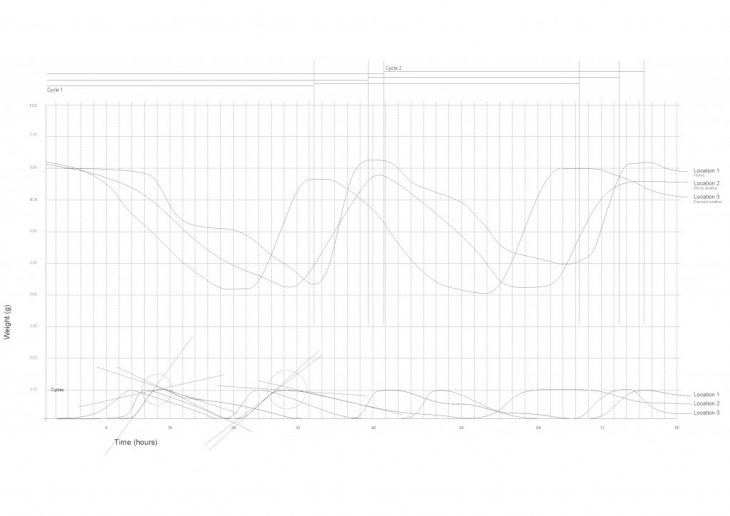
This graph describes the relation between the cracking area and the machine’s rotation (i.e. the dry/wet cycle speed + the environmental conditions in which it it located). It also shows how the visual language of the data relating to the geometry of the machine itself.
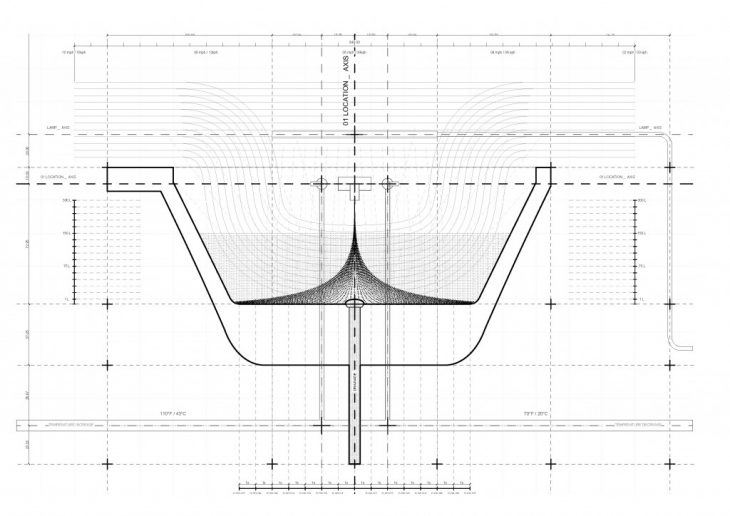
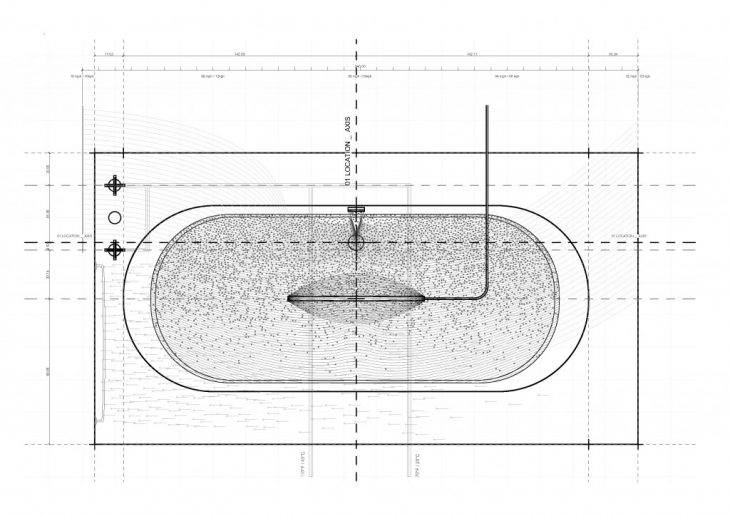
We searched for locations within the urban context that mirrored the energies of the natural locations. These locations visualize the energy surrounding the place and inside it. It is affected by time, space, and natural forces (wind and heat to generate the de-humidification of the material). The drawings indicate the many complexities of the energies surrounding the space that we may not see.
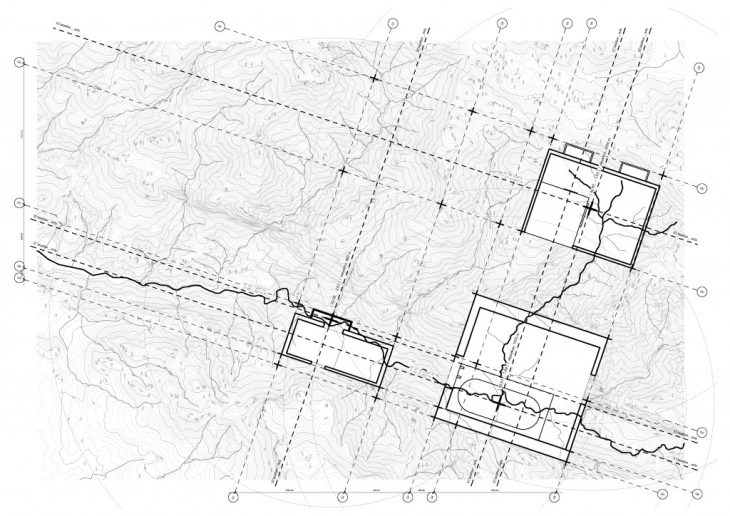
Each of these places offers the same distinct climates as our natural sites.
Bascule is a project of IaaC, Institute for Advanced Architecture of Catalonia developed at MAA01 in 2019-20 by:
Students: Hunter Paine, Lea Garguet-Duport, & Frank Shirying Feng
Faculty: Edouard Cabay & Peter Geelmuyden Magnus
Assistant: Oana Taut
